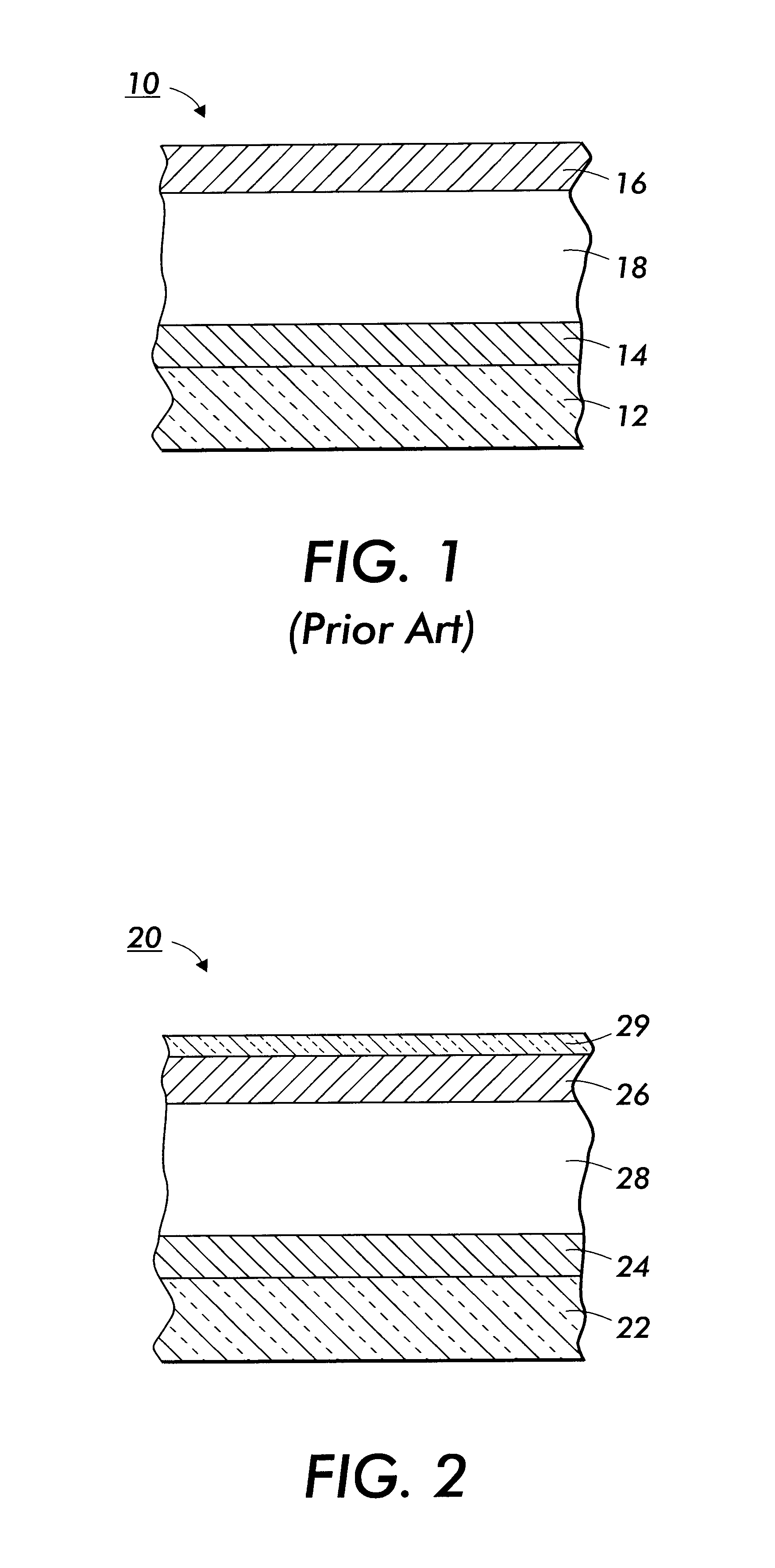Electroluminescent devices containing thermal protective layers
a technology of electroluminescent devices and protective layers, which is applied in the direction of discharge tubes/lamp details, discharge tubes luminescnet screens, electric discharge lamps, etc., can solve the problems of poor thermal stability, unsuitability of el devices, and non-functionality of organic el devices, so as to improve the thermal stability of the device, increase the resistance of the device to shorting, and improve the effect of stability
- Summary
- Abstract
- Description
- Claims
- Application Information
AI Technical Summary
Benefits of technology
Problems solved by technology
Method used
Image
Examples
examples
A first organic light emitting device according to this invention having a structure, such as device 20 shown in FIG. 2, was formed and evaluated. In this device a naphthyl-substituted benzedrine derivative, N,N'-di-1-naphthyl-N,N'-diphenyl-1,1'-biphenyl-1,1'-biphenyl-4,4'-diamine (NPB), and tris(8-hydroxyquinoline) aluminum (Alq.sub.3), was used as the hole transport material and the electron transport material, respectively, comprising the light emitting region 28. The light emitting region 28 was comprised of (i) a hole transport region of about 80 nanometers thick comprised of NPB, (ii) a mixed region of about 80 nanometers thick comprised of about 49.9 weight percent of NPB, about 49.9 weight percent of AlQ.sub.3, and about 0.2 weight percent of dimethylethylquinacridone (DMQ) emitting dopant, and (iii) an electron transport region of about 20 nanometers thick comprised of AlQ.sub.3. The light emitting region 28 was interposed or situated in between the anode 24 comprised of in...
PUM
 Login to View More
Login to View More Abstract
Description
Claims
Application Information
 Login to View More
Login to View More - R&D
- Intellectual Property
- Life Sciences
- Materials
- Tech Scout
- Unparalleled Data Quality
- Higher Quality Content
- 60% Fewer Hallucinations
Browse by: Latest US Patents, China's latest patents, Technical Efficacy Thesaurus, Application Domain, Technology Topic, Popular Technical Reports.
© 2025 PatSnap. All rights reserved.Legal|Privacy policy|Modern Slavery Act Transparency Statement|Sitemap|About US| Contact US: help@patsnap.com



